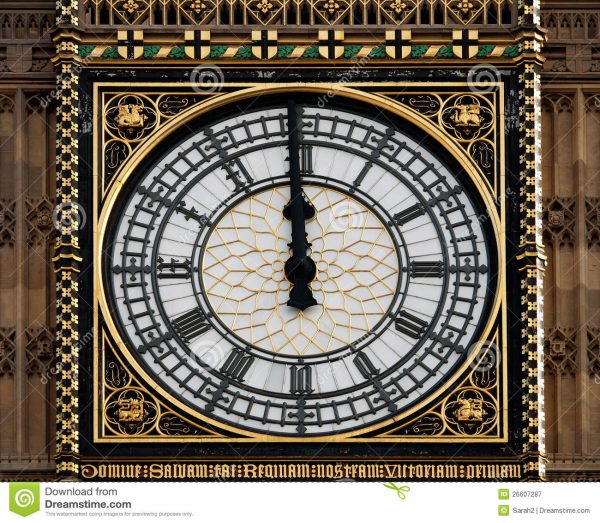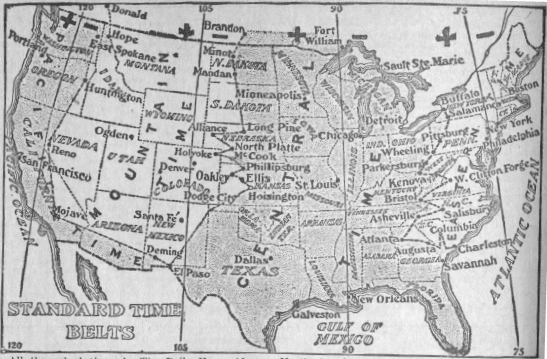Our conception of time altered radically on the Day of Two Noons. On November 18, 1883, the Unites States railway system clocks adopted Standard Time. Clocks across the country were reset at noon for a double dose of lunchtime. Or maybe brunch, as it was a Sunday. The restart replaced a localized and inefficient sun time that had been the norm.
Sun time relied upon a clock tower’s relative position to a noontime shadow cast by the sun. Longitude affected the local time. In Boston (71°04′W), Chicago (87°38′W), and Salt Lake City (111°53′W), there would be a difference of one second per 1,140 foot of longitude. This translates to a minute difference per thirteen miles, or four minutes per degree. Under sun time, there would be a 7 second difference between the Capitol Dome and the Lincoln Memorial in Washington DC, 30 seconds between the ends of the San Francisco-Oakland bridge and 67 seconds between eastern and western Chicago. With apologies to Albert Einstein, time certainly was relative!
Railway companies implemented standardized time. Great Britain got a head start when the Great Western Railway began to use it in November 1840. Other railway companies followed suit. They synched their chronometers on December 1, 1847. On August 23, 1852, the Royal Observatory in Greenwich telegraphed signals that implemented Railway Time, based on Greenwich Mean Time (GMT). Basically, this was all based on the Observatory’s sun time. You have to start somewhere. By 1855, 98% of Great Britain’s clocks ran at the same time.
The continental United States covers roughly 40 degrees of longitude, so there were a lot of clocks operating on sun time. In 1863, Charles F. Dowd introduced the idea of one-hour time zones for the United States to his students at Temple Grove Ladies Seminary, which became Skidmore College. He offered his idea to New York railway superintendents in 1869. His 1870 pamphlet, A System of National Time for Railroads, divided the United States into four 15°, zones. The first would be Washington (DC). He updated the system in 1872 so that the first zone would be in Greenwich and that the State’s zones would have geographic boundaries like the Appalachian Mountains.
Greenwich still proved important, as Britain officially adopted GMT as its legal time on August 2, 1880. Perhaps it was even Meaningful.
When the Day of Two Noons occurred on November 18, 1883, American railway station clocks were reset when standard time noon reached their zone. Hence, noon happened twice. Town by town stuck their two noons and adapted to the standard time. This new system was based on GMT, as Dowd suggested. Its proponent was William F. Allen who was the editor of the Traveler’s Official Railway Guide. His time zones were based on railway terminals instead of geographical bodies. North America would be divided into the Intercolonial, Eastern, Central, Mountain and Pacific zones. Yes, that made five zones instead of Dowd’s four. The Intercolonial zone was in Atlantic Canada.
The change was more easily adopted in some places than others. The Jersey City, PA, station took one minute to readjust its clock. It took down one clock marked “New York Time” and one clock’s sign that read “Philadelphia Time.” 85% of American cities with populations over the 10,000 mark were using standard time by the end of 1884. Detroit held out until 1900. Standing in the middle of the Eastern and Central zone borders, it would switch between sun time, Central Time and Eastern Time. At least it didn’t try Intercolonial Time. The US finally united its clocks when Congress passed the Standard Time Act of March 19, 1918.
Dowd, unfortunately, would not see his system of national time for railroads implemented. A train ran over him in 1904 in Saratoga, NY. At least it was in his local time zone.



There are no voices yet... Post-script us a message below, won't you?